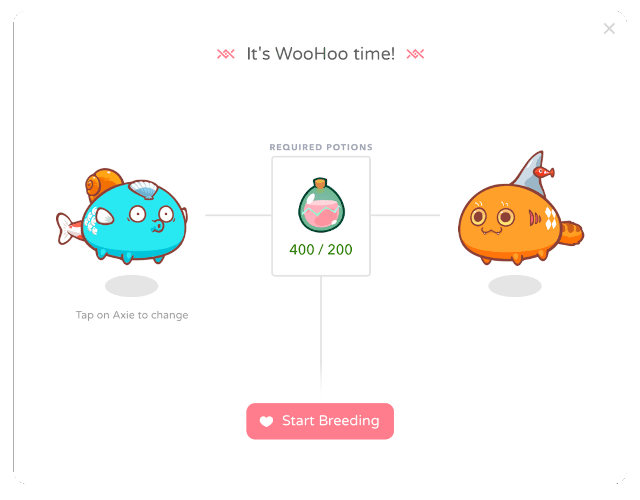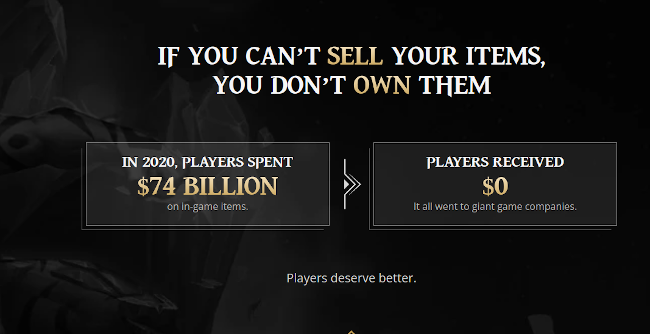
Unveiling P2E Games: The Synergy of Blockchain, NFTs, and Earning Through Play

Unveiling P2E Games: The Synergy of Blockchain, NFTs, and Earning Through Play
Quick Links
Few sectors are escaping the crypto craze, but many game developers have really embraced it. Plenty of gaming-related collectibles can now be claimed as NFTs, but some so-called “play-to-earn” games have gone even further and have crypto and NFT as the stakes.
P2E Games Play For Keeps
Play-to-earn games, also called P2E games or even just crypto games, are games that have cryptocurrency and NFTs as an integral part of the gameplay. Often, instead of buying the game, you buy stuff within it, like characters or weapons or, well, just about anything.
This isn’t entirely unique, plenty of games use a similar model, especially so-called free-to-play (F2P) games. These games let you play for free and even let you earn items through gameplay, but the good stuff is usually locked away behind a paywall—or perhaps a very time-consuming grind.
However, what sets play-to-earn apart from free-to-play is that you can trade and sell your assets to other players. This is because many of these assets are NFTs, or can be turned into them.
Axie Infinity
To illustrate this, it’s probably best to use the system used by Axie Infinity, one of the longest running P2E games out there (and also one that recently lost over $600 million dollars .) The idea of the game is simple: players control “axies,” small fantasy creatures, and battle them against other players’ axies. It’s reminiscent of Pokémon, but in a heavily monetized form.
Players can get axies by buying them ready-made from the in-game store or breeding them for themselves. Breeding involves AXS, the in-game currency combined with what’s called a “small love potion” or SLP. Both AXS and SLP can be earned by playing the game—fighting other players, competing in tournaments, etc.—or by buying them from the store.

However, what makes Axie Infinity interesting is that you’re not only spending money, you’re also making it. If you breed a rare axie, you can put it up for sale on the marketplace, for example, and you can also sell your surplus resources. Where in F2P games the money all flows one way—to the developer—P2E games see some flow back, too. Some people even make a living off playing the game.
The P2E Business Model
However, not as much flows back as you’d think. In an environment where everything costs money, the people who control that environment have ways of adjusting things in such a way that they always come out on top. After all, if they didn’t there wouldn’t be much of a business left.
As a result, everything in Axie Infinity costs money_._ Getting an axie will set you back a few Ether—the cryptocurrency the game runs on—SLPs cost Ether and AXS costs Ether. Technically, many of these resources can be earned in-game, but they are often set on timers so the amount you can earn is actually curtailed unless you spend some real-world money.
On paper, you could play the game on just a minimal investment: buy the starter axies and then grind until you get enough AXS and SLPs to get new critters and go from there. However, P2E games have taken a leaf out of the book of psychological tricks used by F2P games and set up players to buy into the game even more.
For example, there’s such a wide variety of axies and traits for them, that you’re always tempted to get more of them—anybody who has ever collected anything knows this frenzy you can get into. These traits also translate into gameplay, and players who pay into the game will usually have better traits for their axies.
As a result, paying players will often grind free players into dust. This, in turn, turns free players either away from the game or gets them to increase their expenditure so as to remain competitive. It’s a cycle that’s hard to get out of and can be the start of an addiction.
Other P2E Games
To be clear, we’re only using Axie Infinity as one example, other P2E games like Gods Unchained or the planned Illuvium use much the same tactics, just in slightly different forms.
Technically, Gods Unchained, which is a battle game based around cards much like Magic: The Gathering, is a free-to-play game. Your cards are collectible, but you actually need to perform a special action to make them into tradable NFTs. Until then, they’re just game assets. However, to get good cards, you need to spend some money to hurry the process along.
Illuvium, which also is about letting fantasy beasts fight each other, tears the veil away completely and advertises that it will host betting on fights between players, as well as letting you trade fighters with other players.
Do You Really Own Your In-Game Assets?
It’s not just P2E games’ structure that should raise eyebrows, it’s also what it promises. The idea is that you play the game or pay into it and that you own your assets: axies, cards, or whatever it is that the game has on offer. They’re NFTs after all, and you’re the owner, not the game company. Gods Unchained makes a big deal of this on its website.

However, reality proves it’s not quite so simple. There’s a big problem with NFTs , namely that if the server that the records are on gives out, your NFTs disappear into thin air. This has happened, too, and recently.
For example, F1 Delta Time was a game that let you race cars, which were tokens all their own. Recently, it went bust , and all the associated NFTs are now worthless. Considering that some people paid the equivalent of the cost of a house for some of their cars, that’s a lot of money up in smoke.
There are also more conventional risks, like theft. Axie Infinity, for example, was famously victim of a security breach which saw $600 million stolen in March 2022. Considering how much wealth is held in online accounts, they’re a juicy target for criminals looking for a big score.
So, yes, you own your axies or cards or whatever else it may be that these games are hawking, but only as long as the servers stay up and secure. When you play P2E games, you’re not just betting on the outcome of your match—you’re betting on the company being successful, and we’re not sure if we like those odds.
As with everything involving cryptocurrency, we recommend you exercise caution if you’re going to get involved in it.
Also read:
- [New] In 2024, Channel Combat Determining Which Earns More From Videos—Dailymotion or YouTube
- [Updated] Best Mobile & Desktop Apps Adjusting Audio Playback Speed
- [Updated] Capturing the Essence of Hits Shortform Music Video Tips
- AI Detective Sagas: Embark on 4 Thrilling Virtual Investigations
- Get Your Data On-Site Quickly 5 Best Techniques for Computer Transfer for 2024
- How to Factory Reset Realme GT 5 If I Forgot Security Code or Password? | Dr.fone
- How to Reset your Oppo A78 Lock Screen Password
- How To Update or Downgrade Apple iPhone 11 Pro Max Without Losing Anything? | Dr.fone
- In 2024, Lenovo's Easy Pathway to Screen Recording
- In 2024, Scan for Collective Shared Content on Messenger
- Some ways to unlock iPhone 12 Pro screen lock
- Things You Dont Know About Samsung Galaxy S23 Ultra Reset Code | Dr.fone
- Understanding File Sharing in Windows 10: Types, Methods and Tips From YL Computing
- Title: Unveiling P2E Games: The Synergy of Blockchain, NFTs, and Earning Through Play
- Author: Ian
- Created at : 2025-02-18 23:45:03
- Updated at : 2025-02-19 17:20:37
- Link: https://techidaily.com/unveiling-p2e-games-the-synergy-of-blockchain-nfts-and-earning-through-play/
- License: This work is licensed under CC BY-NC-SA 4.0.